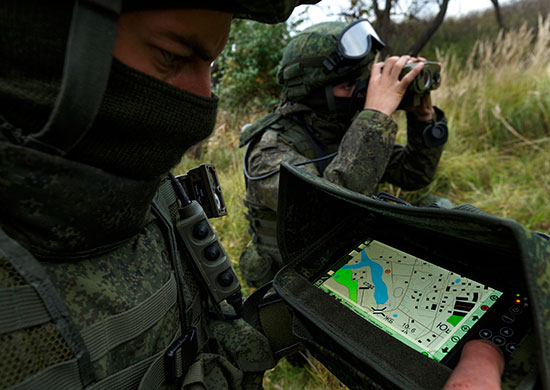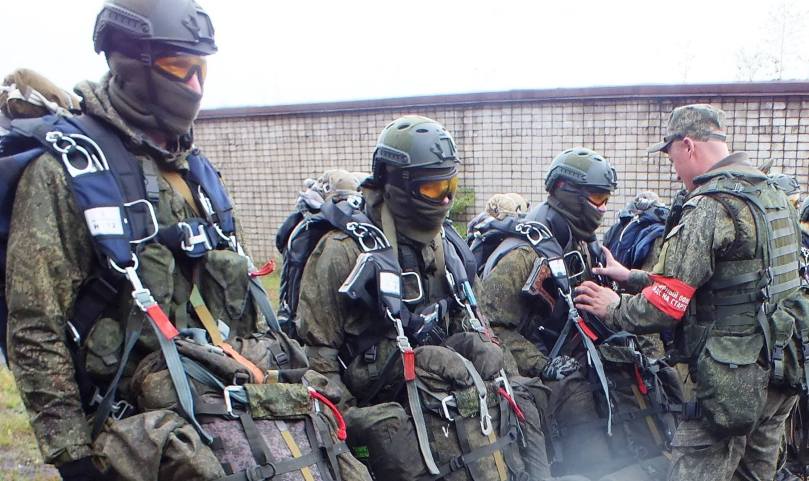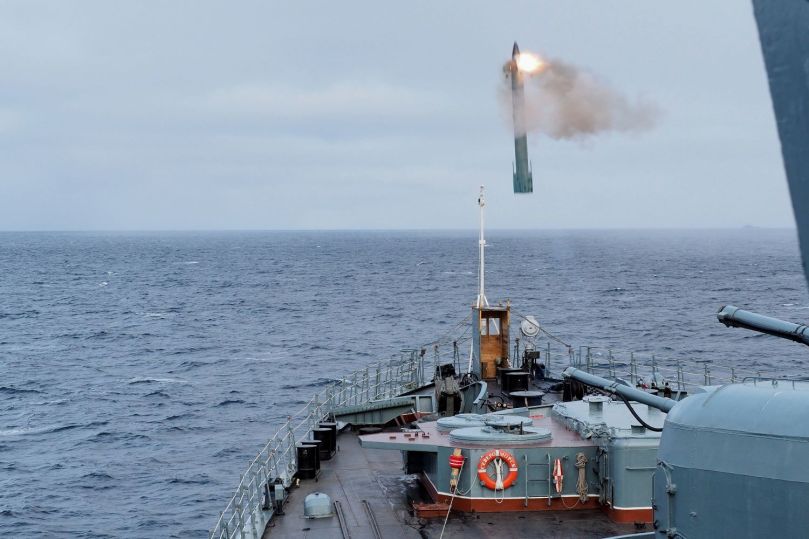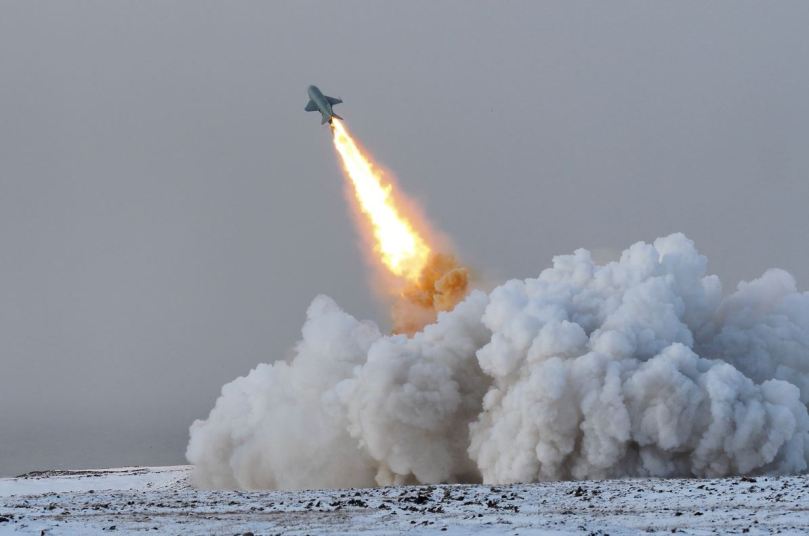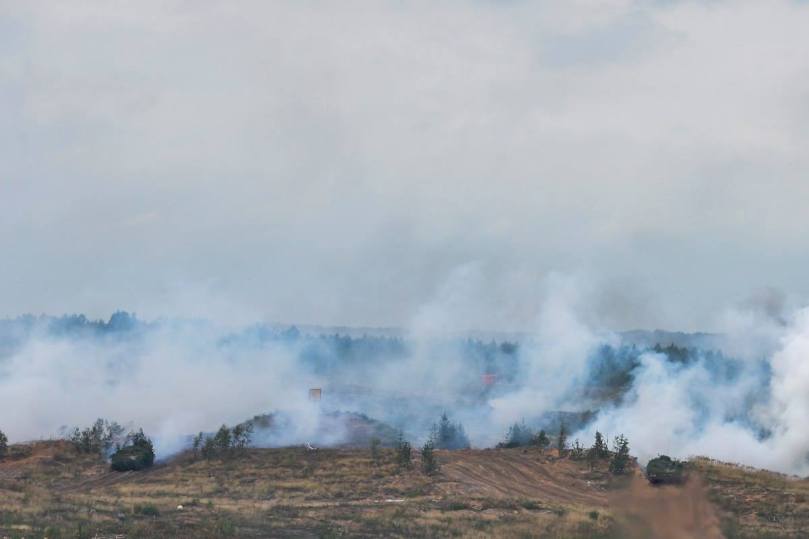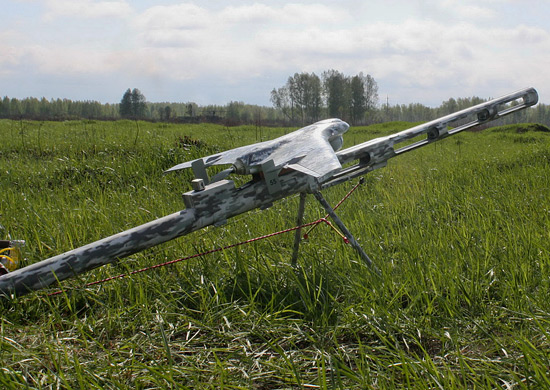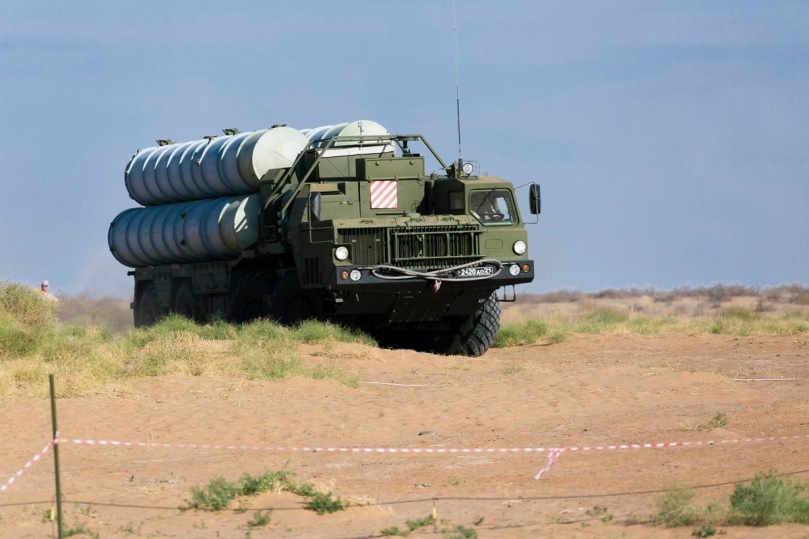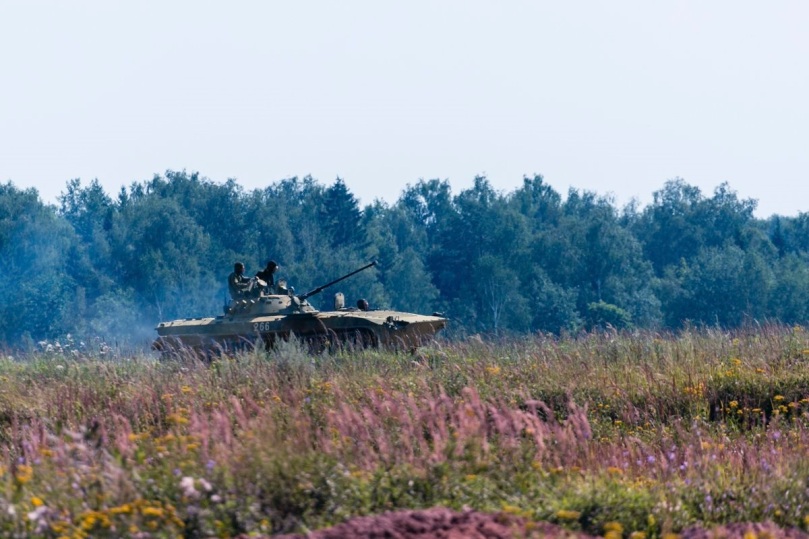I covered Zapad 2017 extensively on this blog, in a day by day account back in September. The goal was to create a resource for the community, something everyone could look back to in their analysis for background. Recently I’ve been motivated to write a short analysis of Zapad, and why both before and after the exercise a lot of coverage got it wrong. There are important takeaways from this exercise, but as always, sensational accounts muddy the waters, and they regularly lead to people learning things that are not true.
German newspaper Bild recently published an amazing article, claiming that according to ‘two Western intelligence’ sources, Russia sought to invade the Baltics, Poland, Finland, Sweden, Norway, and bomb Germany, along with a host of other unsubstantiated claims. I wish to thank them, since their fantastical account of Zapad 2017 is the inspiration for this actual account of Zapad 2017. While it may be general knowledge that Zapad is historically an exercise aimed at a contingency with NATO, much of what Bild claimed is not only untrue, it simply does not make military sense. However, before we get to Bild’s ‘alternative history’ of what happened that is now being passed around twitter like so much other received wisdom, let’s discuss what truly took place this September.

Zapad is typically a two-phase scenario, where the proximate cause of conflict between Russia and NATO is Belarus (since Zapad-1999 when they began running these exercises again). The exercise often features a Russian defense against the supposed intervention, then horizontal and vertical escalation, followed by a substantial counter-attack against NATO. The purpose of the exercise is for the General Staff and national leadership to test the country’s ability to mobilize for a general war, gain experience in training and commanding the newly reformed armed forces, and in the big picture improve its coercive diplomacy vis-a-vis the United States by making clear Russia’s capability and resolve to use force if it’s core interests are challenged.
All those things held true this year, but the actual size of the exercise was much smaller than anticipated, both across Russia, and in the immediate Baltic region. Not 100,000 or any of the other inflated accounts suggesting similar numbers. As Gen. Ben Hodges (just retired), had noted the exercise was somewhere north of 40,000. According to Igor Sutyagin at RUSI 48,000 to be exact, with maybe 23,000 in the areas noted for Zapad exercises. I differ with his account slightly, as I think it was perhaps no more than 45,000 across Russia, while the immediate region should include the Baltic and exercises by the Northern Fleet.
The chief difference is really a narcissism of small differences – whether or not you factor in exercises in the Eastern MD, and foreign deployed troops in Abkhazia, South Ossetia, Tajikistan, Transnistria, etc. Subtract 3,000 listed for the exercise on Sakhalin and you’re probably at about 45,000. There were parallel exercises and annual checks scheduled for that time of year and it’s rather debatable what was part of the Zapad scenario versus what coincided. What is clear is that there are no credible sources out there arguing that the exercise was a massive test of a Russian invasion of NATO, or that 100,000 troops participated in the event (note I said credible).
Zapad 2017 was seemingly not only smaller than anticipated, it was likely smaller than expected in Russia as well, judging by the fact that the number of rail wagons ordered seemed to exceed the amount used by a considerable margin. That is, the original planning back in 2016 might have been for a larger event. Some explained this with a theory that Russia’s General Staff intended to send more forces to Belarus and was somehow turned away. There is nothing to support this version of events. Instead it is very likely that canned exercise press releases were pushed out, for units that at some point were nixed in planning, which may reveal earlier variations that never came to pass (along with the logistical planning for them).
For example, it may have been that the entire 1st Tank Guards Army was supposed to show at some point early in the planning (our press informed us of this dreaded army looming), but actually only select units participated in the exercise. The same goes for entire VDV divisions, which actually only contributed a handful of battalions. Unfortunately Russia’s official press is quite terrible, announcing a lot more on the day to Belarus than there actually was, and people frequently attribute malice to what is typically malpractice.

One possible reason Zapad 2017 was smaller this year is that it did not involve a major counter-attack against NATO forces, with a large scale deployment of 2nd echelon forces into the fight, which might come from Central MD. Although the 90th Tank Division did train as part of the exercise separately, it seems on the whole this event was focused on other matters, and in that way perhaps differs from Zapad 2013. It is also not a general fight against NATO, but a coalition of NATO members backed by the U.S. A distinction with a difference. So the fight was aimed at Poland, Lithuania, and the U.S. in support, based on the lead-in scenario for the exercise (bordering NATO states meddling in Belarus).
I will offer a cursory summary of the phases, although details on what happened during those days can be found in earlier entries on this blog.
Phase One, September 14-16:
- Airlift of support crews and personnel to forward airbases. VDV Airborne drops to defend against lead elements of NATO forces in Baltic region. VKS movements to forward bases near theater of operations with fighters and long range aviation Tu-22M3. Air defense exercises to defend against incoming enemy aircraft and cruise missiles.
- Russian ground forces loaded up and got under way by rail, strong focus on logistics and support units to get armor and mechanized units moving.
- Railway troops, CBRN troops, signal troops, and other supporting units among MTO had a central role in ensuring the movement of Russian forces under simulated fire and cover from adversary ISR.
- Russian Navy defended against incoming cruise missile strikes. They were tasked with getting out of port under aerosol screens, then deployed for ASW, and air defense. Their mission was to take out enemy submarines, and prepare to defend maritime approaches against surface action groups/amphibious landings.
- Southern and Central Military District’s held concurrent drills on the essentials, including logistics, communications, air defense, along with artillery, armored warfare, and reconnaissance.
Phase Two, September 17-20:
- Russia’s General Staff worked to setup a unified battle space 600km wide, under a single combined (or joint) command, that would control the forces in the theater. As they took in units from combined arms armies, the big challenges were coordinating material support, provisions, and communication among these forces, with an effort to establish a common operating picture, along with command and control of different types of forces on the battlefield (combined arms warfare).
- Russian ground forces sought to integrate combat aviation for close support, drones for ISR, electronic warfare units, and air power on the battlefield, together with the traditional artillery and mechanized warfare.
- There was a strong emphasis on recon-strike complex, how to connect drones to artillery, working out the kill chain for both area of effect and long range precision weapons. These are new tools in the toolkit, proliferating across brigades, but there’s much work to be done in actually aligning capabilities and learning how to use them on the battlefield.
- The conflict presumed early horizontal escalation, where Russia would have to defend in multiple theaters against enemy cruise strikes and aerospace attacks (of course only the U.S. global force poses as an opponent with such capabilities). Russian units worked to repair rail bridges, communications, and internal lines of communications assuming that they might be taken out.
- Russian units formed into BTGs of varying sizes, reinforced with VDV troops. Some focused on defending Kaliningrad, or Pechenga for example to the North. Others conducted raids against the enemy behind their lines. Russian forces simulated pushing a NATO coalition out of Belarus, but the size and scale of this exercise was more modest than anticipated. Probably they planned to punch through to Kaliningrad, but that’s just a general assumption (what else would they do?)
- Airstrikes against NATO airbases and other key infrastructure are almost a given in the Baltic region, given the size of the exercise and the scenario, but the offensive nature of the exercise seemed limited in scope.
- The more robust role of the Russian Navy was on display, taking out surface action groups with ships, submarines, and coastal defense cruise missiles. The exercises in the Arctic region were also notable, showing Russia expects enemy forces to be a problem on New Siberian Islands, Kotelny, and other areas under the purview of the Joint-Arctic Command. Zapad featured a lot of counter-sabotage exercises, and defense against raids by enemy special forces.
The exercise demonstrated some core elements of Russian planning for long range conventional strikes with SRBMs and ground launched cruise missiles. This is both part of a conventional warding strike, and likely NSNW employment for escalation control. Russian medium bombers had a role on the last day, but strategic bombers were not involved according to announcements. There may have been a pair of Tu-95MS doing their typical flight past Norway on the last day, but this is not an uncommon occurrence.
I’m highly skeptical that long range aviation had any sort of nuclear attack mission in this exercise, especially since it makes little sense for them, or that the ICBM tests were truly a part of it given the nuclear forces exercise came later in the fall, i.e. all those things were tested and demonstrated to the West on a grander scale after Zapad. The strategic nuclear exercise traditionally follows the combined strategic exercise later in the year. Since Zapad-1999, Russia has on and off included nuclear signaling with strategic bomber aviation, but the intent behind it was to make a point to the United States. This is not a conversation Russia is having with Europe, but one it is having with Washington, since Russia principally sees NATO as a platsdarm for the projection of U.S. military power.
The fables of Russian bombers attacking this or that are often told after Russian exercises, typically by politicians, such as the supposedly simulated Tu-22M3 nuclear strike on Sweden from Zapad 2013, which also never made sense, and was not substantiated by anything. If anyone had a nuclear mission in this exercise it was likely the missile brigades belonging to ground forces.

Given the fear and panic spread in some circles ahead of Zapad, Russia needed fairly little to bolster its coercive credibility in being willing to use force, and follow through with conventional or nuclear escalation. That being said, the message was quite clear about Russian readiness and resolve were there to be a crisis in Belarus. In this respect Zapad was a success perhaps before it even began.
Now let’s get to Bild. This is what Bild thinks happened according to ‘two Western intelligence analysts.’ We can venture some guesses as to what country they’re from on the basis of how they saw these events unfold. This version of Zapad 2017 seems to be Putin’s operation #YOLO

Unfortunately Bild’s account can only help further bolster Russia’s credibility and the mythologized capability of it’s armed forces. Here is what Bild wrote on the basis of mysterious intelligence sources:
- Russian Tu-95MS bombing runs around Norway to strike Germany. Why would bombers with long range ALCMs have to fly anywhere near Europe to launch at Germany and Netherlands? They can fire from behind Moscow. That’s what 2,500km+ range cruise missiles are for. Actually they can hit Germany just fine without bombers too. In any case, there were stories of RAF Typhoons scrambling to intercept Russian planes off of Scotland but its unclear what they were, and it is very unlikely if they were bombers, that their mission was to “bomb” Germany (they don’t carry bombs). Russian bombers and other aircraft visit that part of airspace rather frequently, and are regularly intercepted by NATO aircraft.
- Russian units from Kaliningrad invading Poland. The BTG formed here with VDV reinforcements focused on defense, although it would be interesting to see the op plan for invading all of Poland with 1200 men. The same goes for Sweden and Finland. The 6th Army is basically a defensive Army Corps, so it’s somewhat dubious as to what it has on hand to invade Finland with. Russian units in Pechenga (Northern Fleet) formed a large BTG for defense, but its somewhat incredible to imagine an invasion of Scandinavia with a handful of soldiers, and no actual objective. There’s nothing strategic there to invade (no offense Scandinavian colleagues).
- Russian amphibious landings to seize harbors and ports. Russian Naval Infantry does practice landings, but with an old LST fleet and tiny lift capacity, it’s hardly in the cards nor is it truly their mission. If you can capture a Baltic city with 8 APCs then they have a good chance of doing it, otherwise its problematic. Amphibious assault is not really something Russian forces are well setup to do. Frankly, amphibious anything is not really their forte. Meanwhile the VDV airborne had a much more humble presence than expected, perhaps 4-5 battalions took part from different divisions.
- Cruise missile strikes against infrastructure, if simulated, were done by the two R-500 launches during the exercise, that is via ground based systems. There were also simulated fires from old Tochka-U which are being retired. Although Russia can deliver similar fires via sea and air launched missiles as well. Syria saw a good deal of action at the same time as Zapad 2017.
- Finally, the proposition that Russia practiced an invasion of the Baltics, Poland and Scandinavia, while fighting the rest of NATO, with about 23,000-25,000 troops is at face value somewhat ridiculous. Zapad 2017 is about a high end fight with NATO, but it’s quite clear what the exercise is and isn’t. There was no invasion of Norway, or Sweden, or Poland, or bombing of the Netherlands, or any of the other alt-history Bild got from its friendly intelligence analysts. Senior officials in U.S. and NATO saw nothing of the sort described in Bild’s apocalyptic fantasy.
This was the Russian amphibious landing exercise in the Baltic Sea:

Bild’s account of what happened during Zapad 2017 seems closer to this picture below:

The Zapad exercise historically has a defensive and offensive component, as all strategic-operational exercises should, but 2017 appeared more limited in scale when it came to the ground force offensive/counterattack. Undoubtedly Russian forces crushed NATO in Belarus and saved Kaliningrad, but the rest of it seemed pretty conservative. Instead a strong emphasis was placed on fundamentals and functional areas of development: mobility and logistics, networking and communications, connecting ISR to fires, integrating aviation with ground attack, defense against aerospace attack, queuing and kill-chain development for long range fires, etc. For details you can look back to the day by day coverage in this blog from September.
As for what happened during Zapad 2017 according to twitter, and Bild, I can best illustrate using the imaginative renderings of Jakub Różalski –










